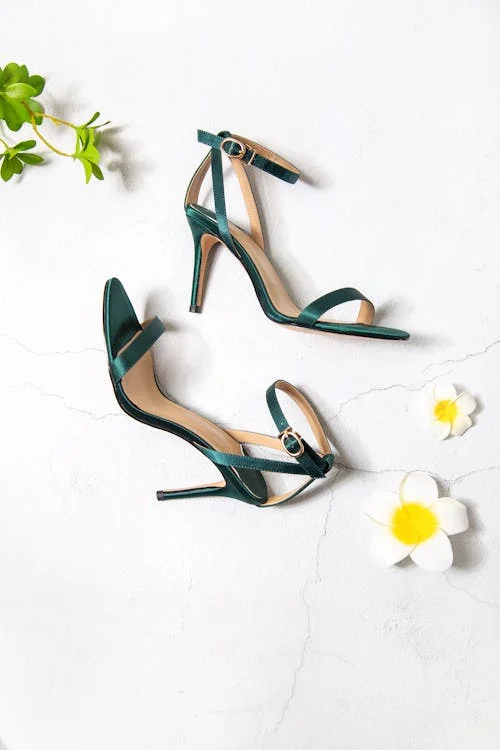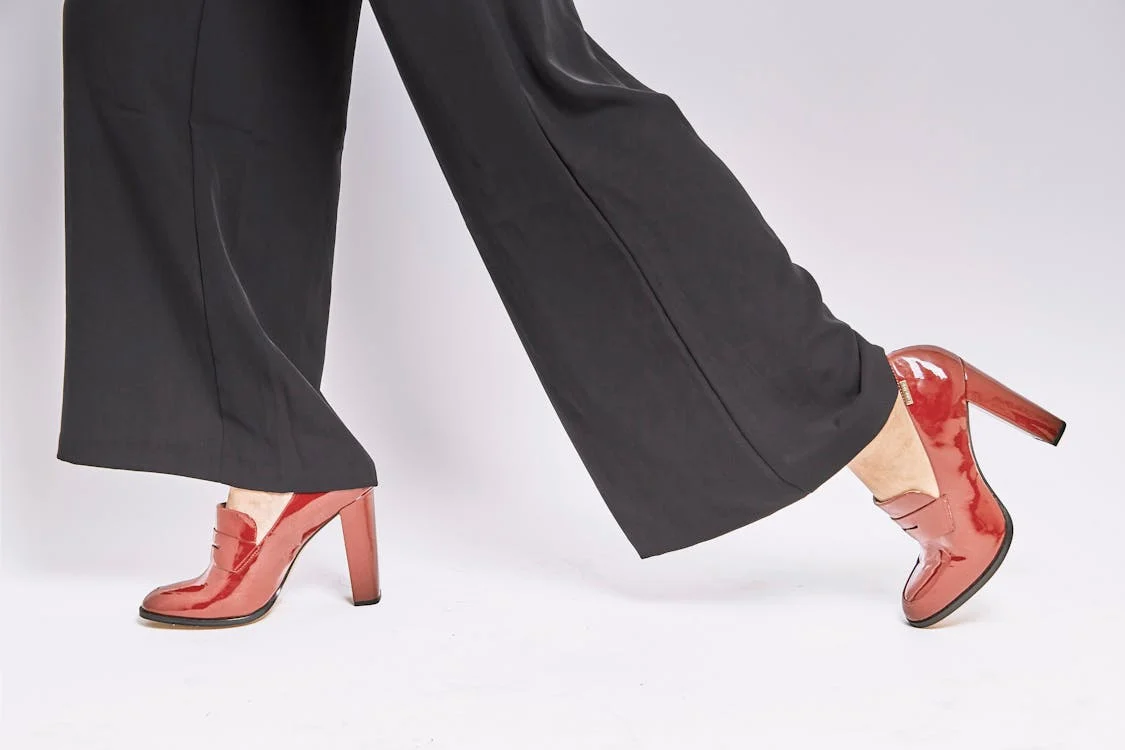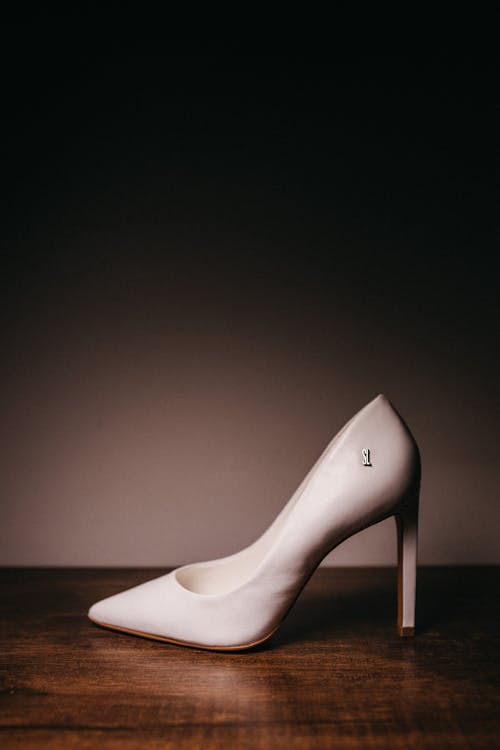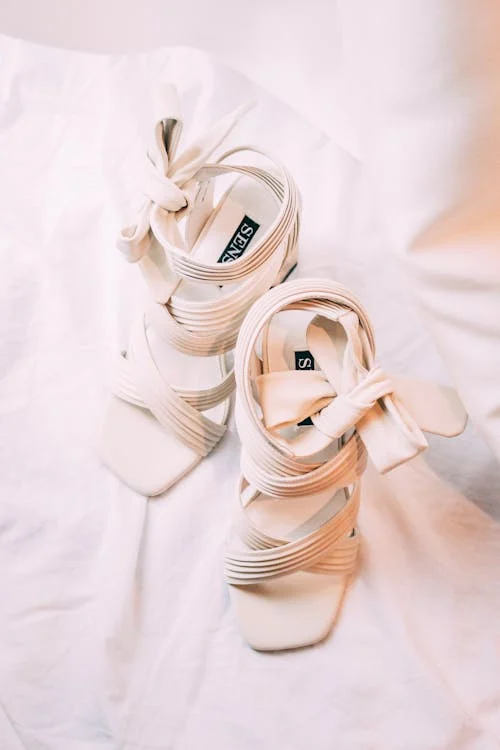Introduction:
High heels are a timeless symbol of elegance, but how should high heels fit? Understanding the science behind the perfect fit is crucial for comfort and confidence. From measuring up to troubleshooting common fit issues, we’ll guide you through the essential considerations for finding the ideal fit.

Understand the Importance of High Heel Fit
When it comes to high heels, the perfect fit is crucial for both comfort and style. We’ll take a deep dive into why choosing high heels that fit is so important. Learn the benefits of high heels that fit, and get practical insights into finding the right high heels.
Why should high heels fit your feet?
The Comfort Factor: Prioritizing Your Well-being
High heels that fit your feet correctly offer unparalleled comfort. When your shoes hug your feet snugly and provide ample support, you can bid farewell to the discomfort of pinched toes, blisters, and sore arches. A proper fit alleviates pressure points and allows you to walk confidently, free from pain.
Enhanced Stability: Stride with Confidence
Properly fitting high heels provide stability and balance, which are crucial for graceful and confident strides. The right fit not only ensures a secure grip but also prevents wobbling and potential accidents. With each step, you’ll exude poise and elegance, knowing that your shoes are supporting you every moment.
Reduction in Foot-Related Issues: Care for Your Feet
Choosing high heels that fit well contributes to foot health. Ill-fitting shoes can lead to a range of problems, including bunions, calluses, and even structural issues like misaligned toes. By investing in the proper fit, you prioritize the long-term health of your feet, avoiding discomfort and potential foot ailments.Investing in high heels that fit your feet properly is essential for comfort, stability, and foot health. Prioritize your well-being by considering the benefits of a proper fit.

The Science Behind a Perfect Fit: Factors to Consider When Choosing High Heels
Comfortable and well-fitting shoes are paramount. We’ll explore the science behind the perfect fit in high heels. From measuring your feet to finding the ideal balance of comfort and style, we’ll guide you towards fashionable and foot-friendly high heels.
Measuring Up: The Importance of Proper Shoe Sizing
Get Accurate Foot Measurements: Before purchasing high heels, measuring your feet is crucial. Accurate measurements ensure that you select the right size for optimal comfort and style. While your shoe size may be consistent, factors such as foot shape, weight, and pregnancy can result in significant size changes.
Know Your Foot Shape and Anatomy: Understanding your foot shape and anatomy enables you to find high heels that fit your feet realistically. Toes vary in length and width, arches differ in height, and insteps have unique contours, so choosing shoes appropriate for your foot shape and anatomy is paramount.
Refer to Size Charts: Shoe size charts provide valuable information on matching your foot measurements with the right size. Knowing your measurements reduces the risk of ordering the wrong size.
Finding the Sweet Spot: Achieving the Ideal Balance of Comfort and Style
Determine Heel Height: High heels come in different heights, so choosing the right height plays a crucial role in balancing both comfort and style. The general rule of thumb is to go for heels less than two inches high if you’re new to heels or need more stability, while higher heels are ideal for experienced wearers.
Check Toe Box Design: The ideal high heel should have a spacious and rounded toe box design to allow for enough toe room and prevent crowding. Toe box design determines the breathability and comfort of your feet, so it’s necessary to select high heels that don’t compress your toes.
Consider Materials: The choice of material affects the fit, durability, and comfort of high heels. Whether leather, suede, or synthetic materials, it’s essential to choose high heels with comfortable and breathable materials that provide proper ventilation and prevent overheating and sweating.
The perfect fit for high heels is a blend of science and art: it balances comfort and style to provide a confident, stylish, and pain-free experience. By following our tips on measuring your feet, understanding your foot shape, and selecting high heels with appropriate heel height, toe box design, and comfortable materials, you can unlock the joy of fashionable, comfortable, and foot-friendly high heels.

The Perfect Fit Checklist: Key Considerations for a Comfortable High Heel Fit
We’ll provide you with a checklist of essential considerations to ensure a comfortable high heel fit. From toe room and width to arch and heel support, we’ll guide you towards finding the ideal fit and stepping into fashionable footwear with ease.
Toe Room and Width: Ensuring Adequate Space and Avoiding Pinching
Wiggle Room for Toes: High heels with sufficient toe room allow your toes to wiggle freely without feeling constrained. Ensure the shoe’s toe box provides enough space to prevent pinching, blisters, and discomfort.
Check for Width: Consider the width of your feet when selecting high heels. Shoes that are too narrow may squeeze your feet, causing pain and potentially leading to foot conditions over time. Opt for styles or brands that offer wider options if needed.
Arch and Heel Support: Finding the Right Level of Support for Stability
Arch Support: Look for high heels with built-in arch support to distribute weight evenly and maintain proper alignment. Adequate arch support reduces strain on the feet, alleviating discomfort and promoting stability while walking or standing.
Heel Support and Grip: Ensure that the back of the high heels fit snugly around your heels, providing support and preventing slippage. A well-fitting shoe should offer a secure grip on your heels, minimizing the risk of instability and potential falls.
Snug Fit Without Tightness: Avoiding Blisters and Discomfort from Loose Shoes
The Right Fit: High heels should fit snugly without feeling overly tight or loose. A snug fit ensures that your foot is properly supported, reducing friction and preventing blisters. Avoid excessively tight-fitting shoes that pinch or constrict your feet.
Testing the Fit: Before purchasing, walk around in the high heels to assess the fit. Pay attention to any areas of discomfort or rubbing. Your feet should feel comfortably held in place without any slipping or sliding.
A perfectly fitting high heel is essential for a comfortable and enjoyable wearing experience. By considering factors such as toe room, width, arch and heel support, and a snug but not overly tight fit, you can ensure your high heels provide both comfort and stability.

Common Fit Issues and Solutions: Troubleshooting for a Perfect Fit
We’ll address common fit issues and provide practical solutions to ensure a comfortable and stable fit. From slipping and pressure points to accommodating wide feet and bunions, we’ve got you covered.
Slipping and Instability: Tips for Keeping Your Feet Secure While Wearing Heels
Heel Straps and Heel Strips: Consider using heel straps or heel strips to prevent slipping while wearing heels. These sticky accessories provide extra friction, ensuring your feet stay in place and reducing the risk of instability.
Insoles and Cushions: To increase comfort and prevent your feet from slipping, try adding cushioned insoles. These insoles provide extra padding and support, relieve pressure points, and provide a snug fit.
Pressure Points and Pain: Relieve Discomfort with Cushions and Padding
Preventing Blisters: High heels can often cause blisters or calluses due to friction between the shoe and your skin. To avoid this, apply blister prevention patches or lotions to sensitive areas.
Padding and Cushioning: Adding cushioning or padding to pressure areas is a great way to relieve pain and discomfort. Specialized insoles, such as gel or foam pads, can help relieve pain and make high heels more comfortable.
How to Wear High Heels with Wide Feet or Bunions: Tips for a Comfortable Fit
Wide Shoes: If you have wide feet, consider choosing high heels designed for wide feet. Wide shoes provide extra space to prevent pinching and ensure a more comfortable fit.
Shoes for Bunion Patients: High heels with a wide toe box or an open toe design are better suited for bunion patients. Choose shoes that don’t put direct pressure on the bunion area to prevent pain or inflammation.
With the right tips and accessories, you can ensure that your high heels are comfortable and stable. Whether you use heel pads, cushioning, or choose shoes designed for wide feet or bunions, you can achieve the perfect fit in your high heels. Don’t let fit issues keep you from enjoying the confidence and elegance that stylish footwear brings. With these tips, you can handle any challenge that high heels bring with ease and grace.
Conclusion:
The perfect fit for high heels requires a balance of style and comfort. By understanding key factors such as toe room, arch support, and heel grip, you can achieve ultimate comfort and confidence for any occasion.
